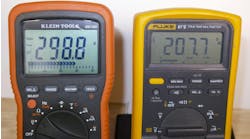In case you might have missed it, after reviewing more than 4,000 proposals and acting on each one of them, the National Fire Protection Association (NFPA) published the 2017 National Electrical Code (NEC) last month. The document is now available for use and adoption by all.
As we do every three years in conjunction with a new release of the NEC, we’re proud to present one of the most important (and popular) articles we publish. This month’s cover story, written by our long-standing NEC Consultant and Code guru Mike Holt, presents the top 25 changes in the 2017 Edition of the NEC. This group of 25 changes was selected because they affect the largest number of our readers. The changes highlighted in this story cover a variety of topics and product types. Some changes are basic, while others might leave you a bit confused as to how to implement and adhere to the new rule. But don’t worry, we’ve got you covered. If you read and study this article carefully, Holt will lead you down the path to success.
Related
During my review and editing process on this cover story, I was thrilled to see that three of the changes in this group of Top 25 are related to electrical installations at marinas, boatyards, and docking facilities (Art. 555). The first of these references the Article’s Title and Scope. It’s now crystal clear that the rules in this Article also apply to one-family, two-family, and multifamily dwellings. The expansion of these requirements to residential dwellings is a great move. The second change in this Article reduces the trip setting of the ground-fault protection device from 100mA to 30mA. This change was brought about by recommendations from the Fire Protection Research Foundation. The third change is associated with a new Section in this Article, which now requires an electric shock hazard warning sign be placed at boat docks and marinas. Although it’s not a technical solution that addresses this type of hazard, it does offer up a clear and visible warning to swimmers that electrical hazards may exist at these types of locations. With all of the tragic electric shock drowning deaths we’ve reported on over the last few years, these three changes in Art. 555 are welcome revisions.
Two other changes in this group of 25 caught my eye. Although both appear to be pretty basic at first glance, the practicality of their implementation and approval may prove a bit challenging for some. The first change in Sec. 110.14 requires an installer to use a properly calibrated tool for conductor terminations when a tightening torque is specified for the terminal by the manufacturer. But Holt raises several interesting questions as to how an inspector is supposed to check an installer’s work. For example, does the inspector have to be on-site during the terminations to verify the tool’s accuracy and whether or not it’s being used properly? Will the inspector check terminations with his/her own tool? The second change deals with receptacle outlet requirements for meeting rooms in other than dwelling units. This new rule requires that receptacle outlets be installed in walls and floors of meeting rooms less than 1,000 sq ft in size as per Sec. 210.71(B). But even though an Informational Note tells us that auditoriums, school rooms, and coffee shops are not meeting rooms, I feel problems might arise as to what truly is and isn’t defined as a meeting room by an authority having jurisdiction.
Although this Top 25 article offers a solid review of the key changes in the 2017 NEC, it’s just the beginning of our journey. We’ll be examining many other revisions and new Article additions for you in the coming year. So stay tuned for more!




